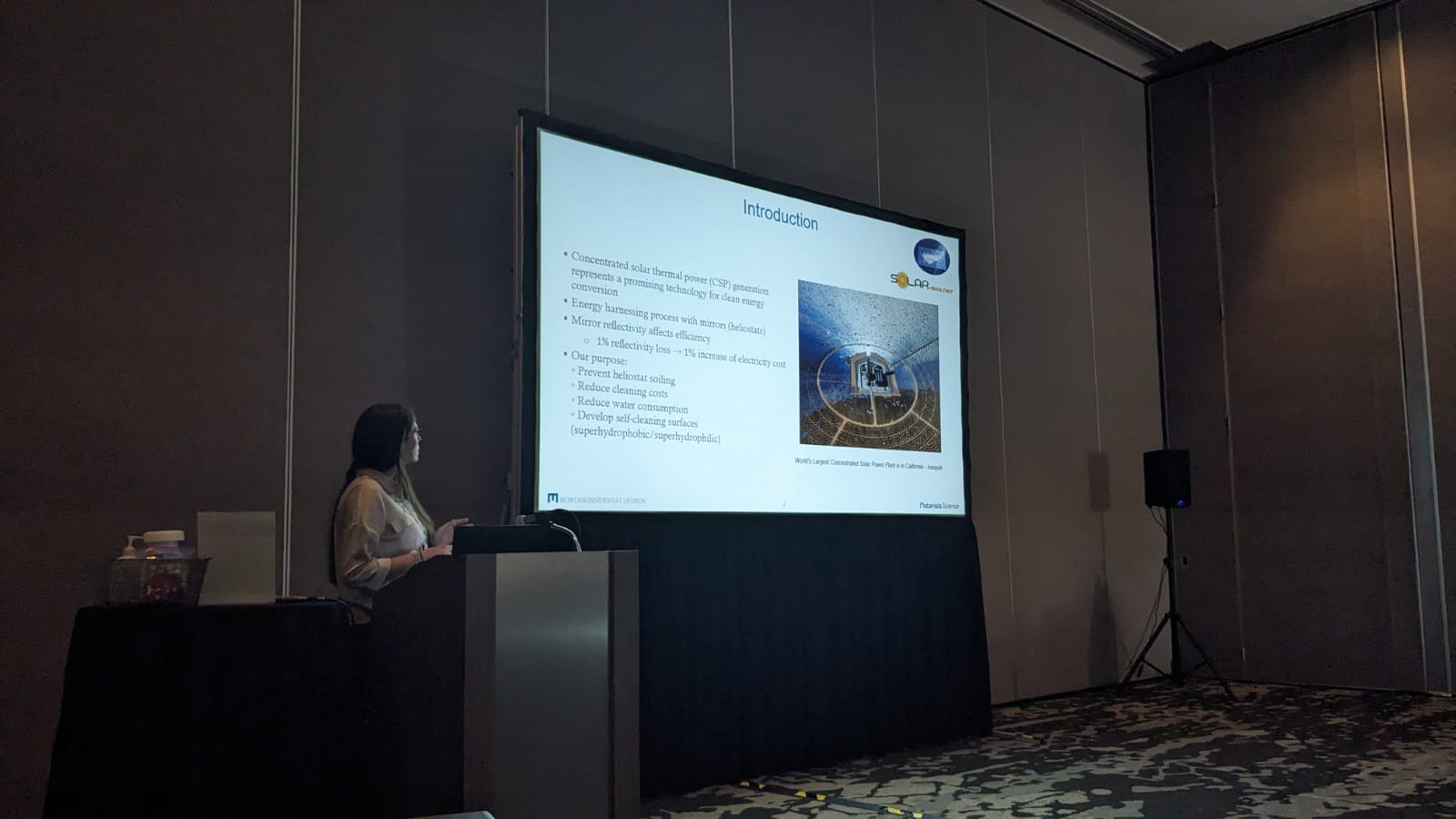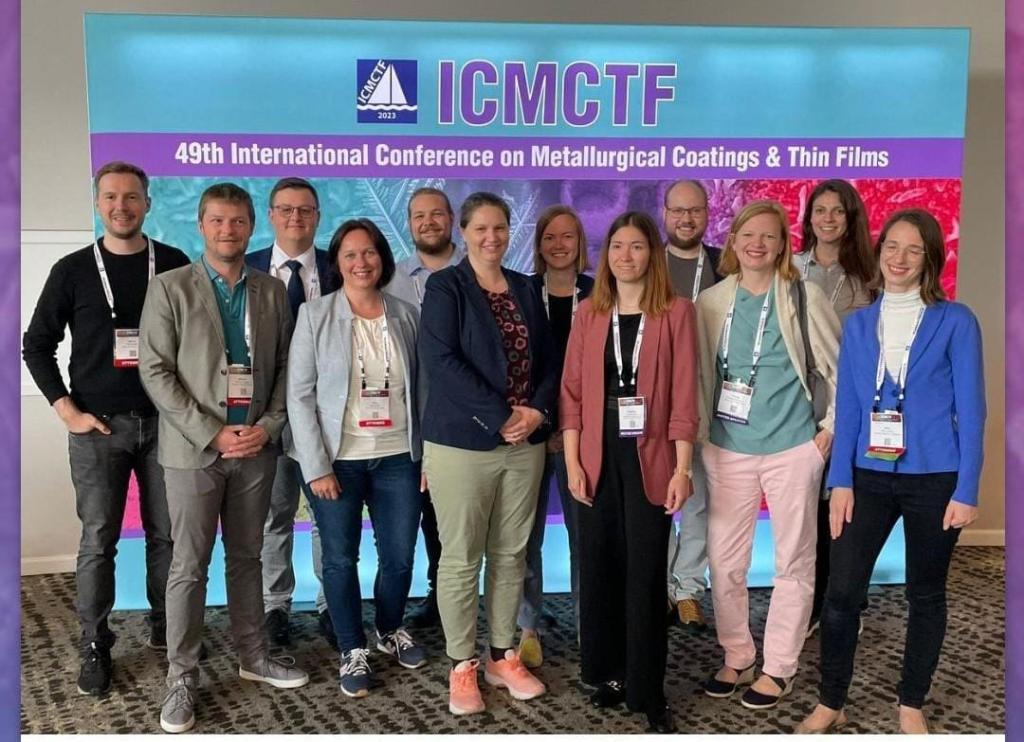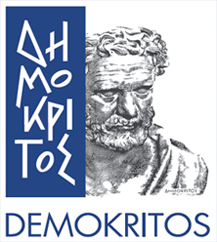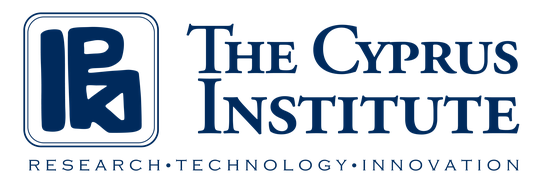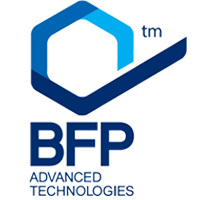[1] A.M. Bonanos, A.C. Montenon, M.J. Blanco, Estimation of mean field reflectance in CST applications, Solar Energy, Volume 208, 2020, Pages 1031-1038, ISSN 0038-092X, https://doi.org/10.1016/j.solener.2020.08.073.
https://www.sciencedirect.com/science/article/pii/S0038092X20309130
Abstract:
The efficient and productive operation of a Concentrating Solar Thermal (CST) plant depends upon knowledge of the mean reflectance of the solar collector field, as the levelized cost of electricity has a one-to-one ratio with reflector optical performance. Considering the size of such collector fields, a continuous detailed survey of the whole field is not a practical proposition. This paper presents a statistical approach to measuring mean field reflectance by sampling only a subset of the field reflectors. We find that three samples are sufficient for evaluating the mean reflectance of a single facet, and that the locations sampled within the facet do not impact the estimate of the mean. Further, for any collection of facets behaving as a cluster, again sampling three facets is sufficient to yield an estimate of the mean reflectance of the cluster. These sample numbers hold for an error of 2.5% at 95% confidence; different error or confidence intervals will affect the sample numbers required. The results are obtained from studying the behavior of both a heliostat and a linear Fresnel collector field. A blueprint for large CST collector fields is derived.
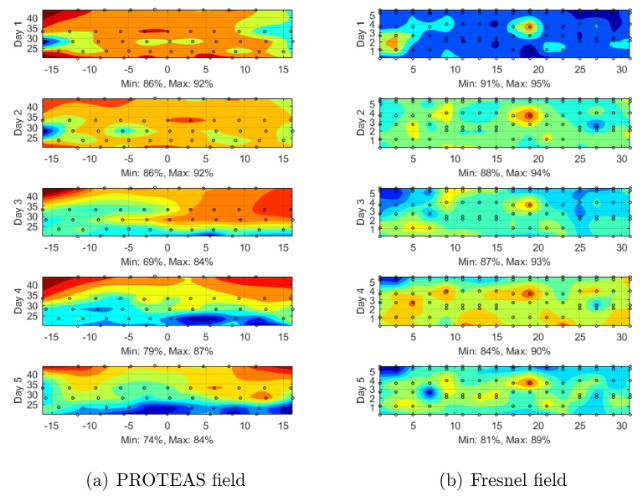
[2] N. Mouti, A. Kaidatzis, K. Giannakopoulos. Superhydrophilic low temperature TiO2 ultra thin films deposited on CSP mirrors by magnetron Sputtering, 36th Panhellenic Conference on Solid State Physics and Materials Science, Heraklion, Crete, Session: Photonics - Optoelectronics II, https://fsk36.materials.uoc.gr.
Abstract:
Soiling of mirrors increases concentrated solar thermal power (CSP) maintenance costs. Previous approaches with self cleaning coatings have failed to fully address the challenges posed by the surfaces' nature and interaction with their environment, such as desert dust. During the present work, we prepare by magnetron sputtering and characterize TiO2 thin films on Guardian Glass CSP mirrors, in order to take advantage of their superhydrophilic self cleaning character. Hydrophilicity has been shown to be a purely surface property after being tested in a variety of film thicknesses. We report here results from thin films of various thicknesses, the best of which was at about 8 nm, with uniform and stable mirror coverage, as seen in optical profilometry. Aiming at low deposition temperatures for fabrication cost reasons, we managed to reach 120o C. The contact angle we achieved was <1o , without the UV treatment that is usually needed. Because maximum mirror reflectivity is also a major requirement, we achieved up to 100 percent film transmission, as the O2 during the sputtering process increases and the thin film’s thickness decreases. The superhydrophilic property and transmittance measurements of representative samples are shown below.
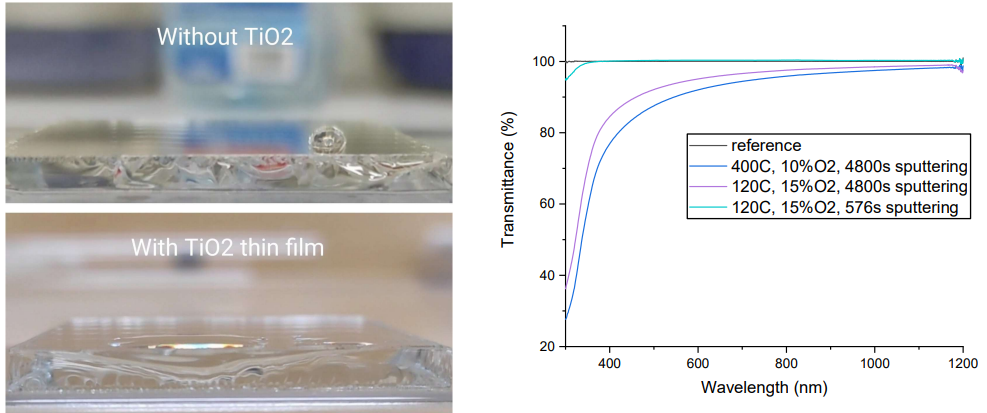
[3] Nafsica Mouti, Andreas Kaidatzis,Konstantinos Giannakopoulos, Magnetron sputtered titania films for CSP mirrors, EUROMAT 2021
Abstract:
Soiling of mirrors is one of the main reasons for the increase of maintenance costs in concentrated solar thermal power (CSP) generation (Bellman, 2020). Such a problem poses multiple challenges originating both from the surfaces' nature and their interaction with their environment - such as desert dust - which previous approaches have failed to address fully. For this application the durability of the layers is critical hence techniques such as sputtering are needed that have shown a remarkable record in the mass scale production of tribological films. The proposed solution takes advantage of the superhydrophilicity of sputtered thin films on the mirrors. As the mirror is the first component to interact with the sunlight in the energy harnessing process, its efficiency is critical to the system performance. Mirror reflectivity is one of several factors affecting the energy delivered by the solar field to the receiver, whilst the reduction of cleaning water consumption (D. Frank Duvenhage, 2019) is another key factor that needs to be addressed. In this work, we study and develop stable superhydrophilic amorphous TiO2 coatings (Lee, 2017) deposited using magnetron sputtering, and we optimize the pre-deposition surface cleaning. We also perform superhydrophilicity measurements and other characterization techniques (SEM, EDS, XRD, Raman, AFM) gaining significant information on the structural and morphological properties of samples of various thickness'. Moreover, we demonstrate the augmentation of the superhydrophilicity and the stability of the deposited layer, whilst maintaining the mirrors' reflectivity. https://www.euromat2021.org
[4] Michalis K. Arfanis, Maria Antoniadou, Nafsica Mouti, Konstantinos P. Giannakopoulos and Polycarpos Falaras, Photoinduced hydrophilicity on titania coatings for highly performing concentrated solar collectors, Conference on Advances in Chemistry (acac2022), June 26 to July 1, 2022, Athens, Greece, P-41.
Abstract:
The present work is targeting the development of concentrated solar collectors (CSP) with enhanced solar powered electricity production through the minimization of the mirrors cleaning demands. Following the deposition of TiO2 self-cleaning coatings, the high reflectivity properties of the CSP mirrors can be maintained for longer periods. In order to implement this objectives this work was focused on: i) the preparation of the appropriate coatings precursor centering on the optimum hydrosol composition, ii) the production and the optimization of the TiO2 coatings onto glass substrates, upon the determination and efficient control of the dip-coating parameters, iii) the determination of the film thickness, surface morphology and roughness, as well as the fine tuning of their wettability and reflectivity properties. Finally, the addition of the back mirror reflectors was performed following a wet chemistry silvering process, using the Tollens’ reagents. The physicochemical properties of the produced thin film coatings where characterized with X-rays diffraction (XRD), vibration Raman spectroscopy, UV/vis optical spectroscopy, atomic force microscopy (AFM) and scanning electron microscopy (SEM). The best TiO2 coatings had a thickness ~20 nm and very low roughness, were well crystallized in the anatase phase, presented minor reflection losses and zero contact angle values, proving their potential in up-scaled applications for the CSP reflectors technology.
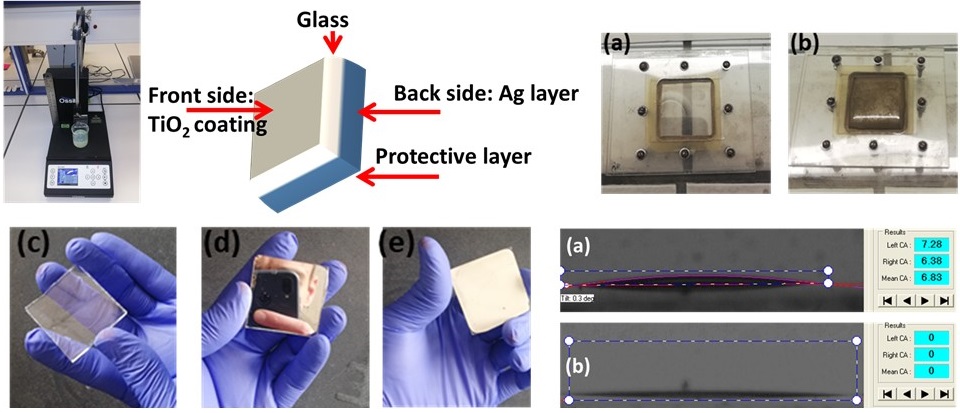
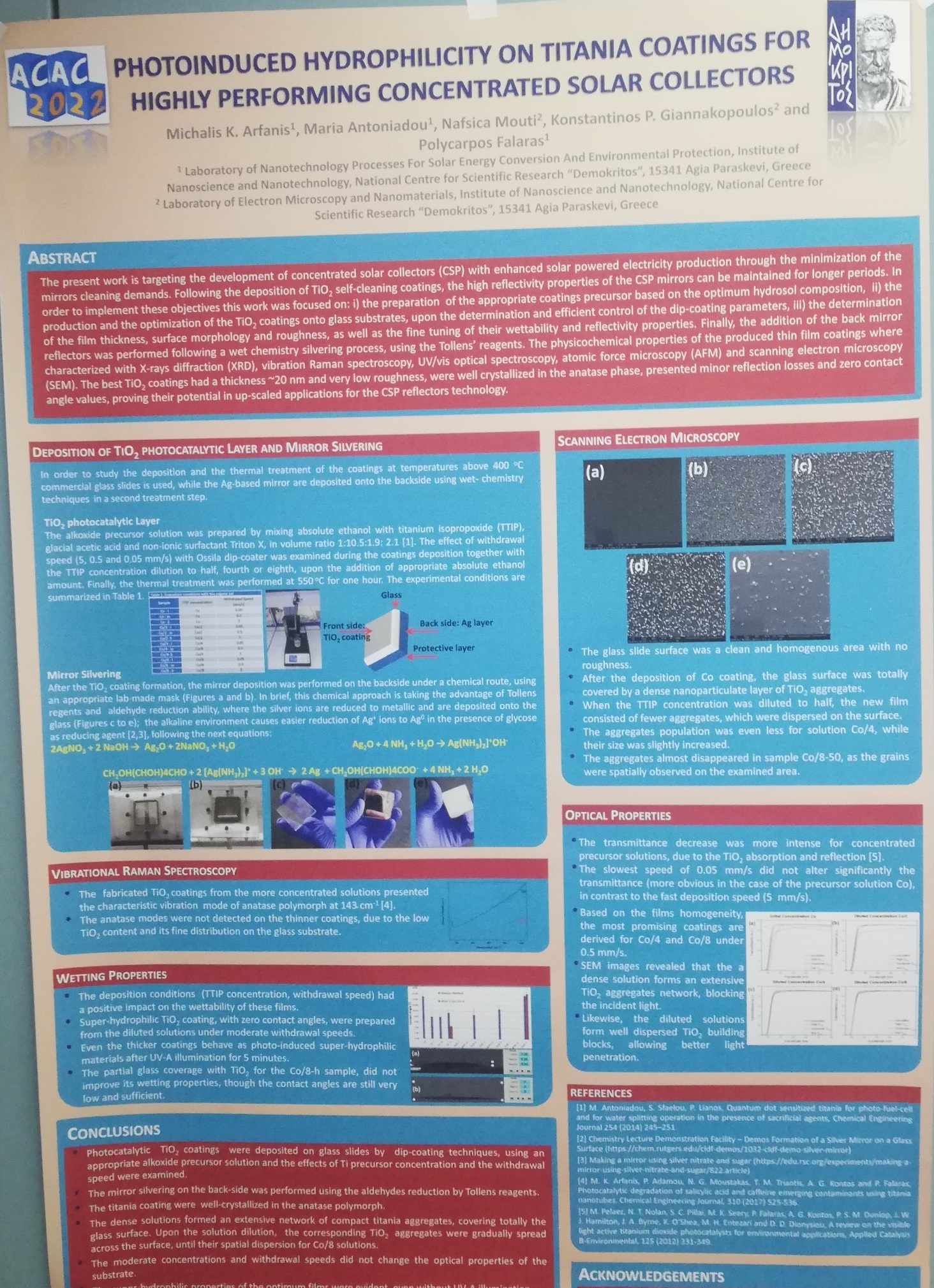
[5] Nafsica Mouti, V. Terxiyska, N. Kostoglou, A. Kaidatzis, M. Arfanis, A. Eliades, K. Milidonis, K. P. Giannakopoulos and C. Mitterer, Revolutionizing Concentrated Solar Thermal Power Technology: Developing Self-Cleaning Mirrors with TiO2 Films, International Conference on Metallurgical Coatings and Thin Films (ICMCTF), San Diego USA, May 21-26 2023.
Concentrated Solar Thermal (CST) technologies constitute a promising approach for harnessing the power of the sun to drive high-temperature thermal processes of interest, such as a power block for electricity generation, high-temperature industrial process heat or high-temperature solar chemistry applications. The Light Collection and Concentration Sub-system (LCCS) of a CST plant is responsible for collecting the direct solar radiation and concentrating it onto the active surface of a receiver system, where the thermal energy conversion takes place. The LCCS use mirrors (usually of parabolic shape) to concentrate the sunlight onto the receiver, however, the accumulation of dust and other particles (e.g. mirror soiling) on the mirrors has a direct effect on the efficiency of the LCCS. To address this issue, the Nano4CSP project with partners from Austria, Greece and Cyprus focuses on the development of self-cleaning CST mirrors using TiO2 films. TiO2 is a well-known photocatalyst, capable of breaking down dirt and other contaminants upon exposure to sunlight, making it a suitable material for creating self-cleaning surfaces. Within this study, sputtering has been successfully used to deposit TiO2 films on CST mirrors at room temperature under various growth conditions. The deposited films with thicknesses in the range of 10 to 1000 nm have been extensively characterized using scanning electron microscopy with energy-dispersive X-ray spectroscopy, X-ray diffraction, Raman spectroscopy, optical measurements, nanoindentation, nanoscratching and field tests.Films with a dominant anatase phase have been found to show self-cleaning properties, thus improving the mirrors efficiency. Additionally, doping of TiO2 films with N2 and Zr has been evaluated, to improve the transparency and photocatalytic properties and to maximize the performance of the mirrors. The obtained results indicate that sputter deposition represents a promising method for producing self-cleaning CST mirrors, since it allows a precise control over the thickness and uniformity of the films, as well as the ability to apply them at room temperature, thus reducing costs and increasing efficiency for the necessary large area deposition on mirror surfaces. The findings of this research can have a significant impact on the further development of CST technology and its widespread implementation in larger scales, increasing the cost competitiveness of such plants by reducing the operational and maintenance costs and the associated water consumption for mirror cleaning
